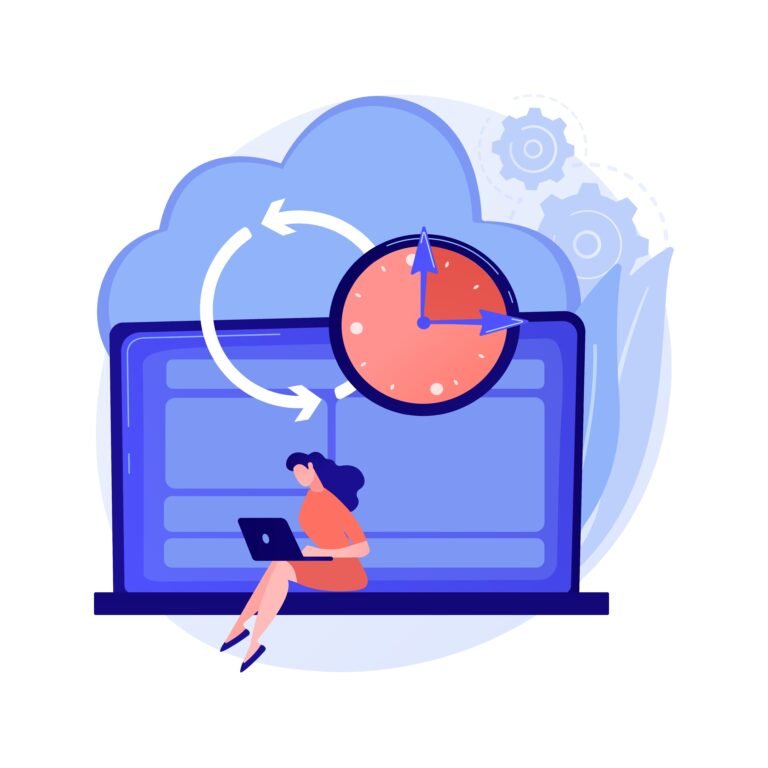In today’s digital economy, data is arguably your Australian business’s most valuable asset. Customer records, financial details, intellectual property, and operational workflows – almost everything relies on digital information. But what happens if this crucial data vanishes in an instant? A digital catastrophe, whether it’s a cyberattack, hardware failure, or natural disaster, can cripple an Australian business overnight. This is why robust Data Backup & Disaster Recovery strategies are not just good practice; they are absolutely essential for survival and continuity.

Table of Contents
Ignoring the need for comprehensive Data Backup & Disaster Recovery is akin to building a house without a solid foundation – it’s a disaster waiting to happen. For any Australian business operating in this interconnected world, proactive planning is the only way to safeguard your future.
The Real Risks: Common Causes of Data Loss for Australian Businesses
Digital catastrophes aren’t always dramatic; often, they’re surprisingly mundane. Here are the most common culprits behind data loss that Australian businesses face:
Human Error: Accidental deletion, overwriting files, or misconfigurations are surprisingly frequent causes of data loss. A simple mistake by an employee can have significant consequences.
Hardware Failure: Hard drives and other IT equipment don’t last forever. Mechanical failures, wear and tear, or sudden component breakdowns can render data inaccessible.
Cyberattacks: Ransomware encrypts your data until a ransom is paid; malware can corrupt or steal information. Australian businesses are increasingly targets, with cybercrime reports rising annually.
Software Corruption: Bugs in software, failed updates, or operating system crashes can lead to data becoming corrupted or unusable.
Natural Disasters: Australia is no stranger to extreme weather. Bushfires, floods, and severe storms can destroy physical infrastructure, leading to irreversible data loss if not properly backed up off-site.
Theft: The physical theft of laptops, servers, or external hard drives directly results in data loss and potential data breaches.
These threats highlight why comprehensive Data Backup & Disaster Recovery is non-negotiable.
Understanding Data Backup: Your First Line of Defence
Data backup involves creating copies of your crucial business data and storing them in a separate, secure location. This is your insurance policy. Without it, you have nothing to recover from.
Key considerations for Data Backup:
What to Back Up: Don’t just back up documents. Include databases, emails, system configurations, operating systems, and any critical applications.
Backup Methods:
Full Backup: Copies all selected data. Simple but can be time-consuming and requires significant storage.
Incremental Backup: Copies only data that has changed since the last any backup (full or incremental). Fast and efficient on storage, but recovery can be slower.
Differential Backup: Copies data that has changed since the last full backup. Faster recovery than incremental, but uses more storage than incremental.
The 3-2-1 Rule: This is the golden rule of Data Backup:
3 copies of your data: The original, plus two backups.
2 different media types: E.g., one on a local hard drive, one in the cloud.
1 copy off-site: Crucial for protecting against physical disasters like fire or flood.
For Australian businesses, using cloud backups with local servers can address both off-site storage and data sovereignty needs.
Beyond Backup: The Power of Disaster Recovery
While backup is about data preservation, Disaster Recovery (DR) is about business continuity. It’s a comprehensive plan and set of procedures for how your Australian business will resume operations quickly after an unexpected outage or catastrophe.
Key DR concepts:
Recovery Time Objective (RTO): The maximum amount of time your business can tolerate being down after a disaster.
Recovery Point Objective (RPO): The maximum amount of data your business can afford to lose (i.e., how old your recovered data can be).
The Plan: A documented, tested strategy outlining roles, responsibilities, communication protocols, and steps to restore IT systems and business operations.
A robust Disaster Recovery plan significantly reduces downtime and minimises financial losses.
Why Data Backup & Disaster Recovery is Crucial for Australian Businesses
The stakes are particularly high for businesses operating in Australia:
Regulatory Compliance: The Australian Privacy Act 1988, especially the Notifiable Data Breaches (NDB) scheme, places significant obligations on businesses to protect personal information. Data loss can lead to hefty penalties and reputational damage.
Unique Environmental Threats: Australia’s climate means businesses are more susceptible to natural disasters like bushfires and floods, making off-site Data Backup & Disaster Recovery absolutely vital.
Cost of Downtime: Studies show that unplanned downtime can cost Australian industrial businesses hundreds of thousands of dollars per hour. For smaller businesses, even a few days of data loss can be catastrophic, potentially leading to closure.
Customer Trust: In an increasingly digital world, customers expect their data to be secure and services to be reliable. A data loss event erodes trust and can permanently damage your brand reputation.
Investing in Data Backup & Disaster Recovery isn’t an expense; it’s a critical investment in your business’s resilience.
Practical Steps for Your Australian Business
Identify Critical Data: Determine what data is absolutely essential for your business operations.
Choose Appropriate Solutions: Select Data Backup & Disaster Recovery solutions (cloud-based, on-premise, hybrid) that meet your RTO/RPO objectives and budget.
Automate Backups: Manual backups are prone to human error. Implement automated solutions for consistent and reliable backups.
Test Your Backups & DR Plan: Regularly test your recovery process. There’s no point having backups if you can’t restore from them effectively. This is where your Disaster Recovery plan comes to life.
Store Off-site: Ensure at least one copy of your critical data is stored in a separate geographic location.
Employee Training: Educate your staff on the importance of data security, safe handling practices, and their role in the Disaster Recovery plan.
These steps are fundamental for protecting your Australian business.
The Role of IT Business Solutions: Powering Your Business Growth
Implementing and managing effective Data Backup & Disaster Recovery strategies can be complex, especially for small to medium-sized businesses without dedicated IT departments. This is where partnering with expert IT Business Solutions: Powering Your Business Growth becomes invaluable. A reputable IT solutions provider can assess your specific needs, recommend and implement the most suitable backup and disaster recovery technologies, and manage them on an ongoing basis.
They can ensure compliance with Australian data protection regulations, set up secure cloud or hybrid backup solutions, and provide rapid recovery services to minimise downtime. By entrusting your Data Backup & Disaster Recovery to professionals, you free up your internal resources, gain peace of mind, and ensure your business can withstand even the most challenging digital catastrophes, truly powering your business growth.
Conclusion
In the volatile digital landscape, the question is not if a data incident will occur, but when. For every Australian business, robust Data Backup & Disaster Recovery planning is a non-negotiable safeguard. By understanding the risks, implementing smart backup strategies, and developing a comprehensive recovery plan – ideally with the support of professional IT Business Solutions: Powering Your Business Growth – you can protect your valuable data, minimise downtime, maintain customer trust, and ensure your business’s continuous operation and success in the face of any digital challenge. Don’t wait for a catastrophe; act now to secure your digital future.
Frequently Asked Questions (FAQs)
What’s the difference between data backup and disaster recovery?
Data backup is simply making copies of your data. Disaster Recovery is a broader plan that outlines the processes, resources, and steps needed to restore business operations and IT systems after a major disruption, using those backups.
How often should my Australian business back up its data?
The frequency depends on how often your data changes and how much data you can afford to lose (your RPO). For highly active data, daily or even continuous backups are ideal. For less critical data, weekly or monthly might suffice.
Is cloud backup sufficient for Data Backup & Disaster Recovery?
Cloud backup is an excellent component of a Data Backup & Disaster Recovery strategy, especially for providing off-site storage. However, for complete resilience, a hybrid approach combining cloud with local or other off-site physical backups is often recommended (the 3-2-1 rule).
How long does it take to recover data after a disaster?
Recovery time (RTO) depends on your Disaster Recovery plan and the type of backup solution. A well-designed plan with efficient IT Business Solutions: Powering Your Business Growth can allow for recovery in minutes to hours, while a poorly planned approach could mean days or even weeks of downtime.
What regulations impact Data Backup & Disaster Recovery in Australia?
The Australian Privacy Act 1988, particularly the Notifiable Data Breaches (NDB) scheme, requires businesses to protect personal information and notify affected individuals and the OAIC in the event of a breach. Robust Data Backup & Disaster Recovery strategies help meet these compliance obligations.
